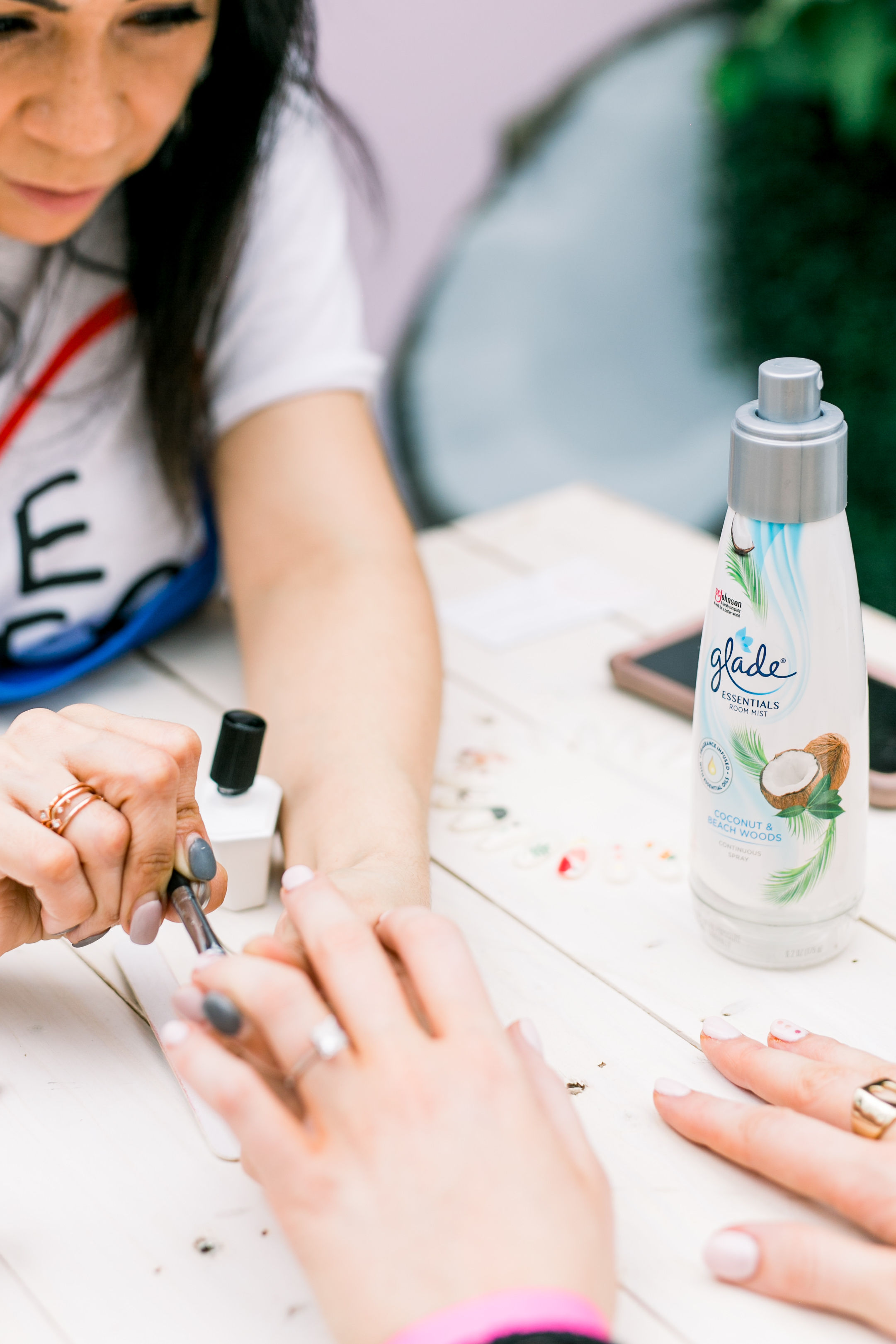So, You're Building Your First Team—Here's 5 Things to Know Before You Do
Take your company to the next level.
Photo: Angie McPherson
Building your first team as a startup entrepreneur is one of the most exciting parts about starting your own business. At last, the time has come for you to delegate responsibilities and get assistance. Let’s be real: you’ve probably needed more help for a while—now you get to actually hire the talent.
Human capital is what makes your business go (and grow) forward. For startups, the first 10 employees hired are crucial to the success or failure of the business. The hiring decisions you make will shape your company’s culture, and your employees will represent and express your brand to the world.
Want to know how to build a team? Here are five critical things to consider when you’re recruiting your first team.
1. You’ll Attract What You Project
When it comes to hiring, you’ll attract the job candidates your postings appeal to. Finding qualified candidates is one thing, but discovering applicants who truly connect with your messaging requires branding yourself with this purpose in mind.
Think about it as a second layer to your brand: there’s what everyone sees, then there’s a look at the corporate culture beneath the brand. Is your startup all about the beer fridge and billiards, or are you more focused on fair pay and benefits? The values and purpose you espouse on your careers page via your social media presence and in your job postings are crucial to finding the right fit.
Forty-seven percent of surveyed recruiters believe that social media is the best way for you to establish and promote your employer brand. Plus, your general audience will also enjoy the transparency; consumers love a peek behind the curtain.
2. Choose From Full-Time Employees and Gig-Economy Masterminds
In lean startup culture especially, it’s customary to harness freelance talent during a growth phase. You can hire freelancers on a per-project basis and you don’t have to contribute to their benefits, though generally their hourly or per-project rates will be higher. Freelancers are independent; they can come and go as they please and as you need them, and they won’t have the loyalty to your business that a full-time employee might.
Your full-time employee, however, has a vested interest in stabilizing and growing your startup. This employee’s livelihood, and most, if not all, of their working hours are devoted to the success of your venture. However, your investment is more concrete.
Your business, and its needs, will best determine this decision; most startups get a core team of full-time employees and freelance as they grow. Some of your best freelance employees may become full-timers eventually.
Whatever you decide, ensure you abide by IRS guidelines about contract workers vs. full-time employees. Many startups make the mistake of confusing the two, leading to potential penalties.
3. Save Money with Virtual Workspaces
Traditional, physical office locations bring a sense of community to your team, but they also contribute to a lot of overhead. As a startup, you can likely use some of your funding elsewhere.
Unconventional workspaces are nothing new to startups, long lauded for beginning in garages, basements and at Starbucks locations across the nation. Before you fill your workspace with people, think about what it looks like. Experts predict that the majority of the American workforce will be remote by 2027. If you’re hiring remote employees, consider candidates who have worked for startups before, people who have worked remotely, and those who indicate they’re self-starting and self-directed.
Tools like time-keepers, Trello, Asana, meeting-free Mondays, and carefully scheduling calls can also help you and your employees, whether virtual or ever-present in a physical location.
4. Recruit Online and by Recommendation
As a startup founder filling a specific niche, you’re probably already acquainted with many people in related industries. These connections are a rich resource. Harness your network to find top talent, especially when it comes to recruiting those initial core team members.
In a survey of over 3,800 recruiters, 43% indicated their primary source for quality hires was from social professional networks, followed at 42% by internet job boards and 32% from employee referrals. Therefore, recruiting online and asking your existing network for direct referrals can support your success.
When it’s time to find your core team, consider these methods. Don’t be afraid to ask a more advanced industry connection questions like, “If you had extra budget, who would you hire?” and “Where did your top entry-level candidates go to school?”
5. Focus on Analytics
As you build your team, it’s imperative to consider the importance of tracking your success. Metrics provide data that can inform your decisions to grow and expand your team, and if you’re planning to receive outside funding, proving your success is mandatory.
It’s also about your customers and clients. Regardless of your industry, every customer you serve is interested in at least one of two things: recommendations and/or metrics. Think about your average e-commerce customer. Shaped by online shopping experiences provided by the likes of Amazon, they’re used to receiving recommendations based on their browsing history and previous purchases.
Providing those recommendations means having a handle on browsing history and customer behavior data. If you want to compete in e-commerce, you’ll need employees who are skilled at working with big data to ensure customer and client success.
In a B2B (business-to-business) market, your customers will be interested in metrics. Their investment in your tool or service may not be useful to them if you can’t prove ROI (return on investment), meaning analytics are also essential components of what you do.
Additionally, there’s the success of your growing business to think about, and that will require productivity and financial analyses. Your core team members must address how to organize, finance and market your organization, and those high-level tasks require detail-driven analytics.
When you hire an analytical mind, consider how they will work with your most creative marketer or your dedicated developer. While “synergy” is a buzzword of the past, the concept still applies; especially in the early stages, you need a team ready to collaborate and weather startup challenges. On opening day, you have the best sense of what your business needs, so trust the data, qualified recommendations, and your business needs. Trust yourself to assemble the best team possible.
ABOUT THE AUTHOR
Jori Hamilton is a feminist writer from the Pacific Northwest who enjoys discussing social justice, empowerment, and how to improve the workplace. You can find more of her work in her portfolio here.
How the C&C Team Finds Inspiration in the Everyday
From long walks to team bonding, here’s how we get inspired each day.
Here at C&C, our team is constantly on the go. Down time is rare, so when we’re able to relax, we really make the most of it. Many of us like to do a little digital detox time and step away from our phones, while others chill out with a good Netflix binge. Regardless, we know recharging is integral to getting inspired for when we step back into the office. That’s why we partnered with Glade® at our ATX popup to bring you an immersive self-care experience complete with a manicure bar—and now, we’re bringing you some of our favorite ways to find inspiration in the everyday. Glade Essentials Room Mist is the perfect way to wind down after a long day (psst…the Mandarin & Mimosa scent smells like the inside of an Anthro store!).
Below, our team shares their favorite ways to get inspired each day.
“Reading the news always helps put things in perspective for me. I feel inspired by people overcoming great (or awful) things and it helps to level-set my worries about problems I'm facing so they feel more manageable.”
- Heather Records, VP of Marketing
“I get my inspiration from my team and their hard work!”
- Alyssa Torma, Junior Producer
“I find inspiration by taking a few minutes to myself in the morning to stretch, spray my favorite fragrance (it’s currently Glade’s Mandarin & Mimosa Essentials Room Mist!), and try to clear my mind to prepare for the day ahead.”
- Chelsea Evers, Editorial Director
“I find inspiration by having an innovative approach to my work. I ask myself, ‘How can I cut budgets and do something new and different for half the cost? How do I solve this logistical issue and find a way for 1000 attendees and 200 sponsors to move through one space seamlessly?’ It’s like a puzzle and I get inspired by solving it!”
- Lainey DePompa, Senior Producer
“Turning off my phone and going for a walk with no distractions, just some me time, lets me actually look around at what’s going on in beautiful LA.”
- Elyse Wasserstrom, Account Manager
“Pinterest inspires me in so many ways, from my personal style to design inspiration to meal prepping ideas. I love a good Pinterest scroll when I need some inspiration during my day.”
- Tyeal Howell, Marketing Manager
“Taking my dog for a walk around the neighborhood gives me a chance to disconnect and think clearly.”
- Caitlin Shier, Director of Accounts & Brand Marketing
Your turn: How do you find inspiration in the everyday?




















